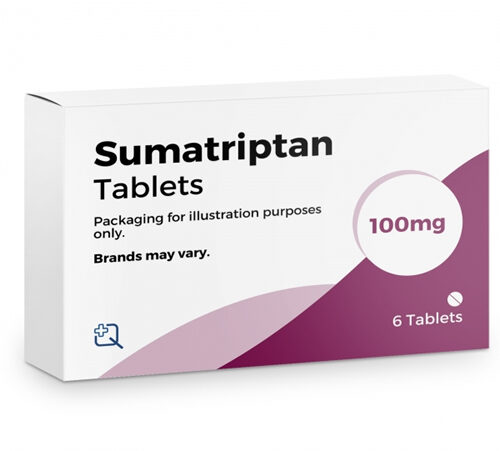No products in the basket.

Developed in the 1980s by UK-based pharmaceutical company Glaxo (now GSK), Sumatriptan was a breakthrough in migraine medication, providing fast and targeted relief that differed significantly from traditional painkillers. Developed in the 1980s by UK-based pharmaceutical company Glaxo (now GSK), Sumatriptan became the first drug in a new class called triptans, designed specifically to combat the unique characteristics of migraines.
In the early 1980s, the pharmaceutical world was facing a gap in migraine treatment. Standard painkillers could only mask the pain but did not address the biological processes unique to migraines. Glaxo researchers set out to develop a medication that would target these underlying mechanisms, inspired by early findings about serotonin—a neurotransmitter that plays a critical role in regulating mood and blood vessel dilation in the brain.
The team hypothesised that by influencing serotonin activity; they could potentially control blood vessel constriction and relieve the intense pain and discomfort associated with migraines. Their research led to the creation of Sumatriptan, the first drug to target serotonin receptors in a way that directly addressed migraine symptoms.
Sumatriptan’s mechanism is unique because it targets specific serotonin (5-HT1) receptors located in the blood vessels of the brain. When Sumatriptan binds to these receptors, it causes the blood vessels to constrict, alleviating the dilated vessels that contribute to migraine pain. This process addresses the throbbing pain and associated symptoms, such as nausea and sensitivity to light, that are characteristic of migraines.

Unlike general painkillers, Sumatriptan’s focused mechanism means it’s not a sedative and doesn’t impair mental clarity, making it ideal for those who need relief without drowsiness or cognitive side effects.
Sumatriptan’s launch brought a variety of administration options, making it a flexible choice for people with different needs:
These different formulations allow Sumatriptan to be used in various settings and scenarios, from mild migraines to severe episodes requiring rapid relief.
Sumatriptan’s specific action on serotonin receptors makes it relatively safe for most people when used as prescribed. However, it may not be suitable for individuals with certain conditions, such as cardiovascular disease, as it can narrow blood vessels. Common side effects, when they occur, are generally mild and may include dizziness, tingling, or a slight feeling of warmth or tightness, which usually fades quickly.
Researchers have carefully tested sumatriptan to ensure its safety and efficacy, but users must follow the dosing guidelines and consult their healthcare provider if they experience any unusual reactions.
Sumatriptan changed the landscape of migraine treatment. Being the first triptan, it paved the way for other medications in the class, providing migraine sufferers with tailored treatments. This targeted approach has since become the standard for migraine relief, allowing for fewer side effects and more effective symptom management compared to traditional painkillers.
Its influence also extended to other areas of research and development. Today, scientists continue to build on Sumatriptan’s success, working on new classes of migraine medications like CGRP inhibitors, which represent the next generation of migraine-specific drugs. However, Sumatriptan remains one of the most widely used and trusted treatments for those seeking immediate relief.
Sumatriptan stands out as a pioneering medication that set the foundation for targeted migraine therapy. It introduced a new approach by directly addressing the physiological processes behind migraine pain, leading to more effective treatment for millions worldwide. Its legacy continues to influence migraine research, marking it as a pivotal moment in pharmaceutical history and a relief for countless people facing the challenges of migraine symptoms.